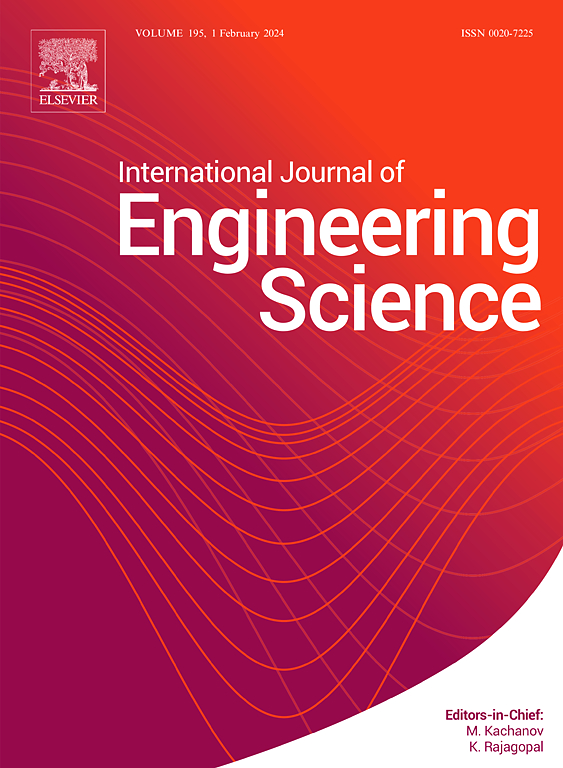A variationally-consistent phase-field cohesive zone model for mixed-mode fracture with directional energy decomposition scheme and modified-G criterion
IF 5.7
1区 工程技术
Q1 ENGINEERING, MULTIDISCIPLINARY
International Journal of Engineering Science
Pub Date : 2025-02-20
DOI:10.1016/j.ijengsci.2025.104223
引用次数: 0
Abstract
Under complex stress-states, mixed-mode fracture is critical to the crack propagation. Additionally, in quasi-brittle materials, the toughness and strength can differ across fracture modes. Therefore, to analyze mixed-mode fracture behaviors under different stress conditions, we developed a new phase-field cohesive zone model (PF-CZM). A directional strain energy decomposition scheme with anisotropic constitution is applied to better describe the mechanical behaviors of damaged materials. A mixed-mode ratio is introduced to describe the relative contribution of mode I and mode II fracture to the crack propagation. Thus, the phase-field governing equation can be still derived by taking variation to the potential energy with respect to the phase-field. The crack orientation for propagation is assumed to be the direction that results in the maximum increase in crack area, which is demonstrated to be consistent with the modified G-criterion. The mode II crack orientation is determined using a deformation gradient-assistant approach. We also propose a new numerical frozen mechanism to take into account the interaction between the existing and incremental crack. Several numerical examples are provided to validate the current PF-CZM. The current study addresses when and how a crack will propagate in complex scenarios and significantly broadens the PFM’s applicability range for mixed-mode fracture, making it suitable for usage with a variety of materials.
求助全文
约1分钟内获得全文
求助全文
来源期刊

International Journal of Engineering Science
工程技术-工程:综合
CiteScore
11.80
自引率
16.70%
发文量
86
审稿时长
45 days
期刊介绍:
The International Journal of Engineering Science is not limited to a specific aspect of science and engineering but is instead devoted to a wide range of subfields in the engineering sciences. While it encourages a broad spectrum of contribution in the engineering sciences, its core interest lies in issues concerning material modeling and response. Articles of interdisciplinary nature are particularly welcome.
The primary goal of the new editors is to maintain high quality of publications. There will be a commitment to expediting the time taken for the publication of the papers. The articles that are sent for reviews will have names of the authors deleted with a view towards enhancing the objectivity and fairness of the review process.
Articles that are devoted to the purely mathematical aspects without a discussion of the physical implications of the results or the consideration of specific examples are discouraged. Articles concerning material science should not be limited merely to a description and recording of observations but should contain theoretical or quantitative discussion of the results.
 求助内容:
求助内容: 应助结果提醒方式:
应助结果提醒方式:


